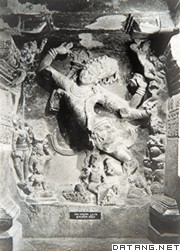1) Buddhist temple


佛教寺院
1.
Buddhist temple is an important tourist resource in China.


佛教寺院是我国的一项重要旅游资源。
2) Buddhism temple


佛教寺院
1.
The Buddhism temple in Beijing areas has a long standing and deep cultural base.


北京地区佛教寺院源远流长 ,基础深厚 ,其文化特征大体可概括为 :“庙系天下”的政治色彩 ,“庙会商业”的世俗经济 ,“园林景观”的休闲场所。
3) top tourism destination city


佛教重点寺院
4) the economy of Buddhist temple


佛教寺院经济
1.
With the development of the Buddhism, the economy of Buddhist temple becomes a important part of the social-economic structures in Middle Ancient period.
中国中古时期佛教的传播发展使佛教寺院经济成为社会经济结构的组成部分之一,在与以王权为代表的世俗社会既统一又矛盾的状态之中,并形成相互影响相互运动的利益关系。
5) Tibetan Buddhism temples


藏传佛教寺院
1.
In this paper,on the basis of statistical information,the author analyzes the time and spatial distribution characteristics of Qinghai′sTibetan Buddhism temples in Yuan Dynasty and its causes.
藏传佛教在形成后,开始了向外的传播,青海是藏传佛教传播的重要地域,在元王朝的大力推崇下,藏传佛教在青海得到了较大的发展,但不论在时间上还是在地域上,青海藏传佛教的发展都具有不平衡性,本文依据统计资料,分析了元代青海藏传佛教寺院分布的时空特点及其产生原因。
6) Present
[英]['prezənt] [美]['prɛznt]


佛教寺院自养事业
1.
An Investigation into the Present Self-Sufficient Undertakings of Buddhist Temples in Chongqing;
当前重庆佛教寺院自养事业考察研究
补充资料:埃洛拉石窟寺院
| 埃洛拉石窟寺院 Ellora,Cave Temples at 印度中世纪的石窟和石凿寺院综合建筑。在奥兰伽巴德城西北约25千米处。分属于佛教、印度教和耆那教。
佛教石窟开凿于7~8世纪,主要是僧房窟。这些石窟不仅重视实用性,而且重视装饰性,修建得富丽堂皇。浮雕题材多样化,有观音和弥勒菩萨雕像,还有多罗菩萨、金刚萨埵等早期密教图像。这里的石雕像躯体粗壮,公式化,已受到印度教造像的影响。7~9世纪开凿的印度教石窟占有重要地位。埃洛拉的盖拉萨山在印度教神话中被视为湿婆神居住的神山,16窟的盖拉萨那陀寺是在山崖巨石上雕成的,包括门厅、前殿、主殿、寺塔等各种建筑结构,整个寺院布满华丽的浮雕和壁画,显示了这一时期印度教的兴盛,在世界古代建筑中独具一格。开凿于8~10世纪的耆那教石窟,规模较小。 |
说明:补充资料仅用于学习参考,请勿用于其它任何用途。
参考词条
